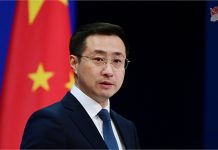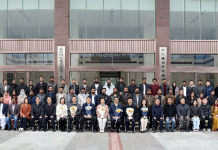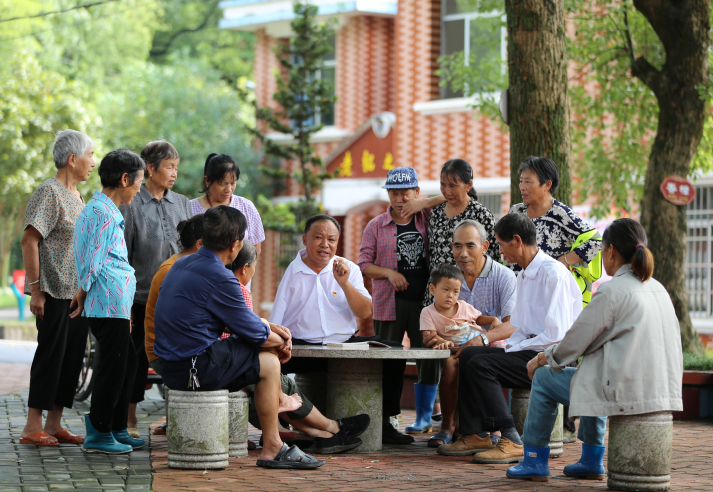
Instead of going to court and filing a lawsuit, the woman and her husband filed a complaint with the Jinan No.2 Medical Dispute People’s Mediation Committee, demanding compensation from the hospital.
The committee is responsible for resolving disputes between doctors and patients in the district through people’s mediation, a non-judicial community-based dispute resolution method for resolving conflicts and improving harmony.
The committee suggested the two parties hire a third-party evaluator to investigate the case and determine the hospital’s responsibility. The evaluating agency then found that the hospital was indeed accountable for the child’s debility, classifying it as a grade-eight disability. China has a 10-grade disability rating system, with grade one being the most severe.
Based on these findings, and in accordance with related laws and regulations, the committee mediated between the two sides to reach an agreement that required the hospital to pay a large sum of compensation.
Director of the committee Liu Fengsheng told Beijing Review that compared with resolving disputes in court, people’s mediation is free and usually takes less time than litigation; it also helps to resolve disputes and reduces the workload of the courts.
Liu has been working as a people’s mediator for more than 10 years after retiring from the local justice bureau. He said the committee was set up in 2011 because the number of medical disputes had increased, affecting social stability.
The committee is composed of retired lawyers and young people with legal expertise. It receives more than 120 cases each year and resolves more than 98 percent of them.
Liu Xinbao, a people’s mediator with the committee, told Beijing Review that in addition to having legal knowledge, a people’s mediator must be patient and learn how to communicate with both parties to gain their trust.
Liu recalled that in a case the committee settled in 2022, a 38-year-old woman died of HELLP syndrome 20 days after giving birth. HELLP (an acronym for hemolysis, elevated liver enzymes and low platelets) syndrome is a life-threatening pregnancy complication that usually occurs in the late stages of pregnancy or shortly after delivery.
The woman’s family could not accept her death and insisted that the doctors were responsible for her passing. The furious family went to the hospital, demanding the institution be held accountable and they be compensated for their loss.
The hospital then contacted the committee and asked for help in resolving the case. The latter subsequently dispatched three mediators.
The mediators first tried to calm the woman’s family members and persuade them to focus on their legal rights rather than give in to emotion. The mediators also asked the hospital to seal the patient’s medical records to preserve evidence. After the mediation, the woman’s family members gradually calmed down and agreed to let the committee get to the bottom of the tragic matter.
A third-party evaluator hired by both parties in the case found that the patient had high gestational hypertension, but the physician didn’t inform the patient or require her to undergo further testing or treatment. The patient had abnormal weight gain during her pregnancy, but the doctor didn’t advise her to keep her weight under control. Consequently, the hospital was partly responsible for the patient’s death.
Through people’s mediation, the committee helped the two parties reach an agreement that required the hospital to pay the patient’s family more than 400,000 yuan ($56,114) in compensation.
Across the country, people’s mediation is used to resolve not only medical disputes, but also a wide range of other conflicts, such as disputes between neighbors, employers and employees, and conflicts between husbands and wives.
However, Liu Fengsheng cautioned that people’s mediation can’t be used in all cases. For example, criminal cases such as murder, arson or rape can’t be resolved through mediation.
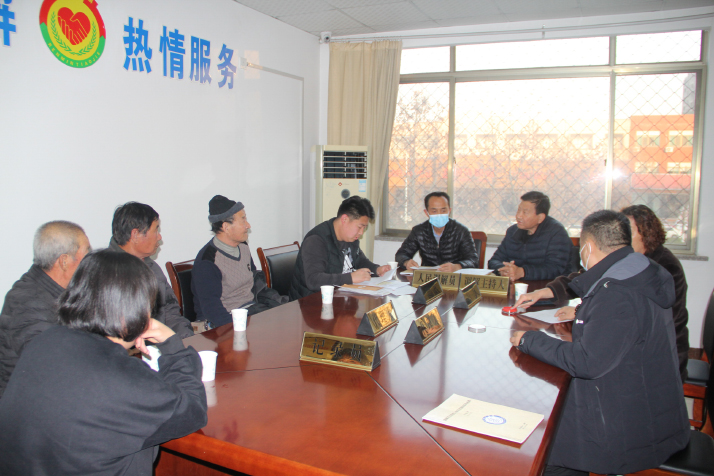
A solid system
In Zhuji City, Zhejiang Province, social governance centers at the village, township, and city levels have established a dispute mediation network that effectively resolves conflicts and improves social governance capacity at the community level.
In Duhuangxincun Village, Fengqiao Town of Zhuji, two villagers, surnamed Chen and Ruan, had a dispute over their farmland. Their plots were adjacent to each other, and Chen claimed that Ruan had encroached on his land. Village officials and the local mediation committee tried to settle the dispute, but failed. To solve their problem, they suggested that the pair go to the village social governance center.
There, the mediator video-linked with a local judge, who explained the related laws to the villagers. The pair eventually agreed to settle the dispute through mediation. Chen agreed to return the land and apologize to Ruan.
At present, Zhuji has more than 500 social governance centers. In the city, more than 90 percent of disputes are resolved at such centers in villages and towns, and only the remaining 10 percent go to the Zhuji Municipal Social Governance Center. The disagreements that go to the municipal center are often either complicated, or involve multiple departments and regions. The center is like a comprehensive hospital for conflicts and disputes. After registering, people can go to the appropriate department to solve their problems.
Chen Ting, deputy director of the municipal center, told China Central Television (CCTV) that the facility comprises 14 mediation departments specializing in areas such as property disputes and traffic accident disputes.
In one case, a citizen surnamed Zhang received mediation from the traffic accident mediation department.
His father, who was riding a motorbike, collided with a car in July and was hospitalized. The driver of the car bore the main responsibility for the accident, but the younger Zhang had a dispute with the insurance company over the amount of compensation.
Ying Linyuan, the mediator in charge of resolving the case, told CCTV that the insurance company initially set the compensation at 15,200 yuan ($2,133) for medical expenses and lost wages. But Zhang’s family was expecting a compensation of 22,000 yuan ($3,088).
After Ying went through several rounds of negotiations with the insurance company, it eventually agreed to a settlement at 18,000 yuan ($2,526).
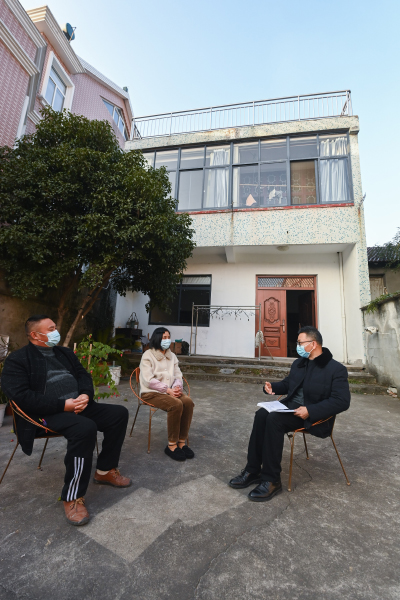
An evolving model
The aforementioned Fengqiao Town is the birthplace of the Fengqiao model, a successful practice of people’s mediation, which resolves conflicts and disputes through mediation and encourages
community involvement—rather than legal action.
The model was first advocated by the late Chinese leader Mao Zedong in 1963. Mao urged local governments to take note of the Fengqiao model after learning about the town’s experience with it.
In 2003, when Xi Jinping was secretary of the Communist Party of China (CPC) Zhejiang Provincial Committee, he stated that the Fengqiao model “must be cherished, promoted and refined.”
Since Xi took office as general secretary of the CPC Central Committee in November 2012, he has given a series of important instructions on applying and further developing the Fengqiao model.
Localities have implemented his instructions and rely closely on the people to explore new methods of governance at the community level, creating a safe and stable social environment for the advancement of China’s modernization.
On September 20, Xi, also President of China and Chairman of the Central Military Commission, visited Fengqiao Town and the Fengqiao Model Exhibition Hall to learn about the practices of the model in the new era.
During his visit, Xi said the Fengqiao model should be further developed in the new era.
Li Ming and Liang Yuzhu, researchers of Xi Jinping Thought on Socialism with Chinese Characteristics for a New Era at the Party School of the CPC Central Committee, wrote in a commentary published in Guangming Daily newspaper that the Fengqiao model “reflects the principle of relying on the people to prevent and resolve social conflicts, as those who mediate conflicts in grassroots social governance organizations or mediation centers are ordinary people.”
The two researchers also pointed out that as new conflicts emerge, such as those involving the environment and the digital realm, the model will need to evolve to meet changing societal conditions.
Zhang Yi, an official with the Shanghai Justice Bureau, told Shanghai.gov.cn that people’s mediation is not just a means of resolving disputes “but a community-level democratic legal system.” It was written into China’s Constitution in 1982, and in 2010, the country enacted the People’s Mediation Law, which is China’s first comprehensive and specialized law on people’s mediation.
According to the law, the agreement reached through people’s mediation is legally binding. If there is a dispute between the parties regarding the mediation agreement, any party may bring a lawsuit to the court. After the court confirms the mediation agreement is valid, if one party refuses to honor the agreement, the other party may apply to the court for enforcement.
Zhang said that the Ministry of Justice is promoting the judicial confirmation of mediation agreements by the courts to make the agreements legally enforceable.
Zhang added that people still lack the awareness of resolving disputes through mediation, and litigation is still the first choice for most people when they are involved in disputes. Therefore, it’s urgent to improve their awareness through education. –The Daily Mail-Beijing Review news exchange item


